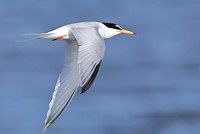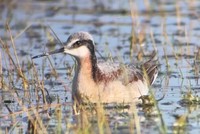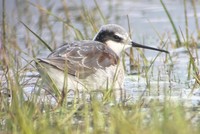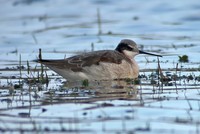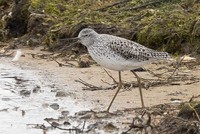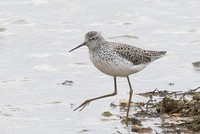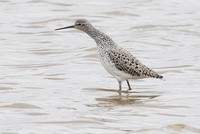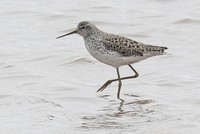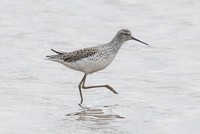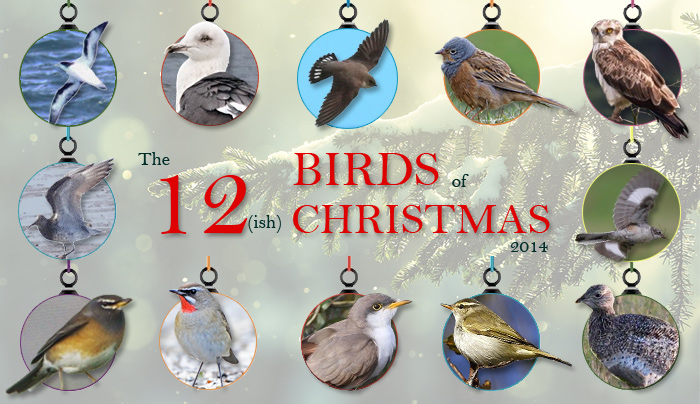
Yesterday’s first offering in the “12 Birds Of Christmas” series took us to a position out in the Atlantic, a couple of hundreds miles off of the Irish west coast.
Today’s bird takes us to terraferma and to a gulling hotspot of some repute, at a time of the year when the species concerned was vying for attention amongst a fine early February crop of really good rarities ~ wintering Myrtle Warbler and Red-flanked Bluetail in County Durham and Gloucestershire respectively, a much-twitched American Coot in Highland and a fine juvenile American Herring Gull in Argyll & Bute all being particularly eye-catching…
…but, as Prince as once wrote in his pre-Squiggle days ~ “Nothing Compares to U”… the “U” in this case being a bob-on, text-book, classic near adult Slaty-backed Gull in, of all places, Galway City…
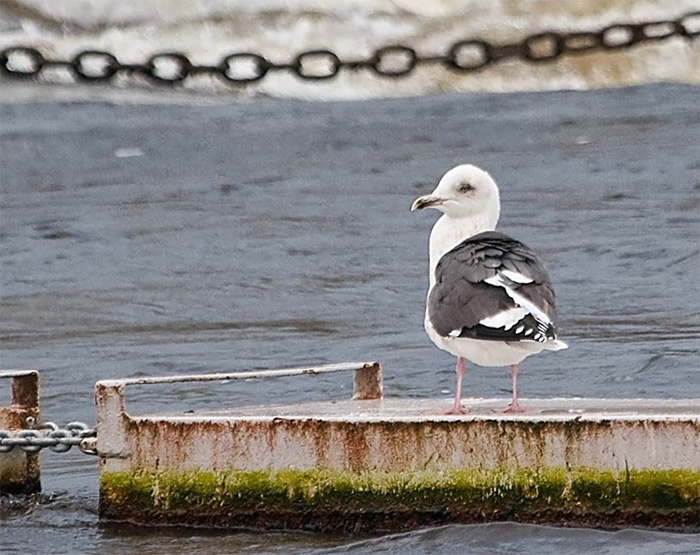
Gullers in Ireland, and those who also travel regularly from Britain, are only too well aware of the treats that can lie in store all the way around the Irish “west coast” ~ from the easy-to-watch joys of Ring-billed Gulls on County Cork’s Cuskinny Marsh to the thrill of a seething, swirling, braying mass of “white-wingers” over the trawlers of Donegal’s legendary Killybegs ~ yes, Ireland in winter is undoubtedly a land of opportunity for the stalwart Larophile.
Whilst the hopes of chancing upon a cracking baby “Smickers” or Thayer’s Gull (an “anything goes” species appearance-wise these days…) are always there in the back of the mind when at any number of Ireland’s gulling hot-spots, few would have popped any Euros on Galway producing such an outstanding gull as the one found (and photographed) by Tom Cuffe on February 8th this year.
Slaty-backed Gull can only really be on the most optimistic of gullers “potential finds” list around the exciting expanses of Galway Bay (along with Black-tailed Gull maybe) but, to the amazement of pretty much everybody, that’s precisely what Tom did this year and who better to fill us in than the man himself...
”A quick scan at Waterside on February 8th was just about right with the time available, so as to be home for the Six Nations rugby match between Ireland and Wales. Waterside is located on the East side of the River Corrib, just at the Salmon Weir. A beautiful scenic spot, with the imposing limestone and copper domed Galway Cathedral as a back drop and the roar of the water going over the weir.”
”Waterside always have a good selection of gulls, regulars including Iceland, Ring-billed along with rarer species such as the adult Laughing Gull seen there in May 2006”.
”The usual gulls and birds were present all roosting on the pontoons which prevent pleasure boats drifting down on to the weir. Black-headed, Common, Herring and a single Great Black-backed Gull. A single Cormorant in full breeding plumage was preening and a couple of Moorhens. Next in view was Lesser Black-backed Gull. This was very unusual to see in Galway at this time of year, although there had been a couple of 1st winter birds at Nimmo’s. Then a “white-winger” was further along the pontoon…”
”Time to get the scope and cameras out to take a few shots.”
”The pontoons are usually just a bit too far for DSLR so I thought that digi-scoping should get a few decent shots, although it was very dull. A quick scan of the birds and looking at the Lesser Black-backed Gull something was not quite right - it had pink legs, the mantle was very dark and it was just slightly smaller than the Herring Gull.”
”Everything about the bird was strange. So I took a few shots, then a few shots of the 2nd winter Iceland Gull. Back to the strange LBB - I knew I needed to get some flight shots for the open wing. I knew this would be a diagnosing feature that Dermot Breen would need to see if it was something unusual.“
”When I got home, I went straight to the bookshelf for Olsen and Larsson’s Gull “bible”. The only bird I could match it to was a Slaty-backed Gull, but the bird I had seen seemed too small, “it can’t be it” I thought. Anyway, I processed a few shots and sent them to Dermot’s phone. Dermot replied and said it was a strange looking Lesser Black-backed and added that it would be great if it was a Slaty-back…”

”Late Sunday evening and I started processing the shots. At this point I was selecting a few Iceland shots to post on my Face Book page. The shots of the pink leg ”Lesser Black-backed” were poor and I was almost not going to post them. Now, as most people know I did post them too my Face book page and also to the UK-Gulls Face Book page.“
”Within minutes of posting both Ronan McLaughlin and Dan Brown wanted to see flight shots. Dan Brown’s reaction was ‘Jesus’ and Ronan’s the ‘string of pearls’. The confirmation of a 4th year Slaty-backed Gull and the 1st for Ireland hit the airwaves. Wow!
”I am 99% sure I have seen the bird again on August 22nd, at the slipway at Nimmo’s Pier. That morning I had an appointment, with a bus to take me to work. If I got the camera out I know one photo would not be enough. When I have the camera in my hand time means nothing, so I just couldn’t take the chance. I got the bus and now only I regret not taking just that one shot. “
I’m still looking for that elusive bird. What else would you do at Nimmo’s but look for a rare gull? “ Tom Cuffe, Dec 2014.
…who’d have though it ~ a storming, perfect Slaty-backed Gull and in Galway too….as the much-missed Father Ted Crilly would have said, “what the flippin’ flipper is that all about”?!?
Tom’s shot of the bird on the deck, along with the particularly telling (and crucial) flight shot, ticked every single box on the “suite of characters” checklist for a bob-on schistisagus - the overall feel was undoubtedly that of a Slaty-backed Gull and it exhibited a primary pattern to die for. Size and structure, especially where the bill was concerned, led one Asian expert to suggest that this was a female. Whatever the sex, this was, undoubtedly, the real deal.


Slaty-backed Gull has an extremely large range, breeding in northeast Siberia, from Cape Navarin south to the northern tip of North Korea while their wintering range extends down to include the whole of the Korean peninsula, northeastern China, most of Japan and along in to Taiwan.
Whether this bird has come west and taken a jaunt “over the top” or headed east from Nearctic (several vagrants have been recorded in Newfoundland, so a further track east out across the Atlantic is a potential arrival route) is something of course we’ll never know the answer to, but there’s fun to be had speculating. (It could also have been lingering within the Western Palearctic for a while and just not picked up as a more immature individual.
The Western Palearctic’s first Slaty-backed Gull, an adult, was discovered in Lithuania in November 2008 before, remarkably, being relocated in Latvia a few months later by Aberdeenshire-based gull guru Chris Gibbins. Further records have followed from Iceland (in May 2012), Finland (in November 2012) and Belarus (in December 2012) while here, well, we all know the story…
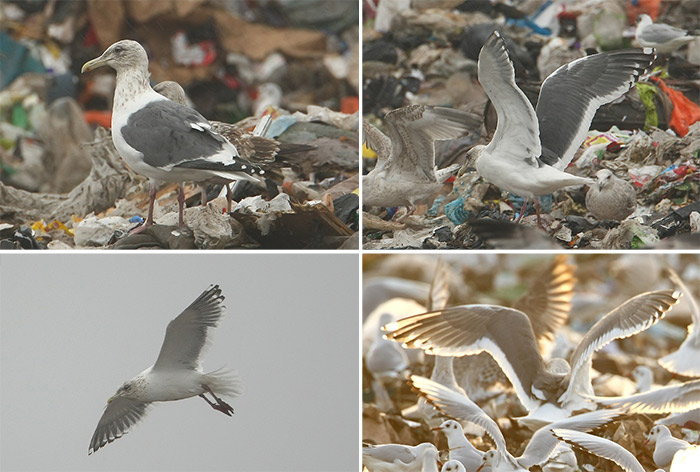
To date, there is just one other record on these shores, the much-discussed adult-type that occasionally frequented assorted London and Essex gulling locations through January and February 2011.
At the time, that now-infamous bird generated more chat than almost any other species bar the ill-fated and binned Slender-billed Curlew at Druridge Bay and, much as was the case with online witch-hunt with the Curlew, the same voices that shouted loudest about that bird also seemed to “win” the debate re:- the Rainham, Hanningfield, Vange and Pitsea bird.
The debate swirled round and round and round - the overall paleness of the bird being the main bone of contention (see the adjacent “compare and contrast” shots of the Galway and Essex birds which I used back the review in February), though most other elements of the bird’s appearance were deemed well within the species’ range - the open-wing being particularly strong in the schistisagus department.
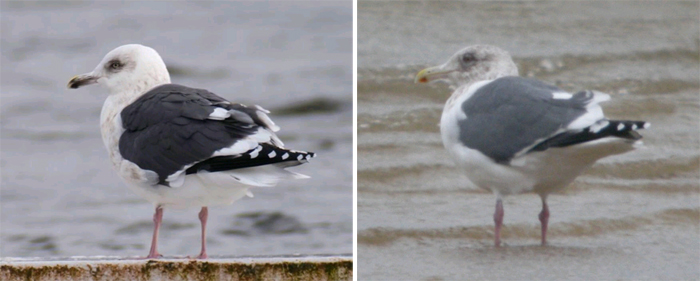
As it stands, as of the end of 2014, there’s still no decision from BBRC, the record remains firmly “In Circulation”, so there’s still some way to go before it makes its way to the BOURC - assuming that it is, that the BBRC green light the bird. The smart money remains on Slaty-backed Gull making the grade and on to Category A. The Irish committee will have no such problems with Tom Cuffe’s Galway bird…
What will tomorrow’s offering be? We’re wandering to the east coast for the spring’s first big draw…
With special thanks to Tom Cuffe for his thoughts and images of this superb February find. Thanks too to Steve Arlow for allowing us to use his outstanding shots of the Pitsea indivdual and David Acfield for the image of the same bird when it popped in to Hanningfield Reservoir.
Mark Golley
26 December 2014
Thanks to Oriole Birding for sponsoring The 12 Birds of Christmas 2014
 |
|
||||
 |
|
|
|
||
|
|
|
|
|
||
|
|
|
||||
|
|
|
||||


